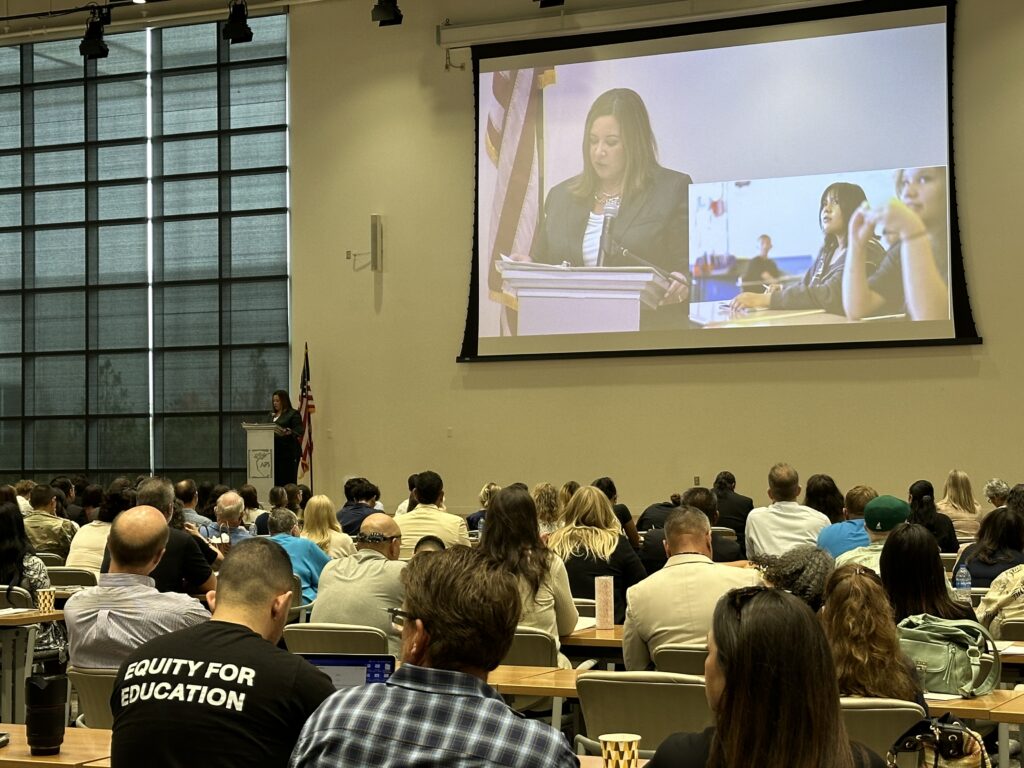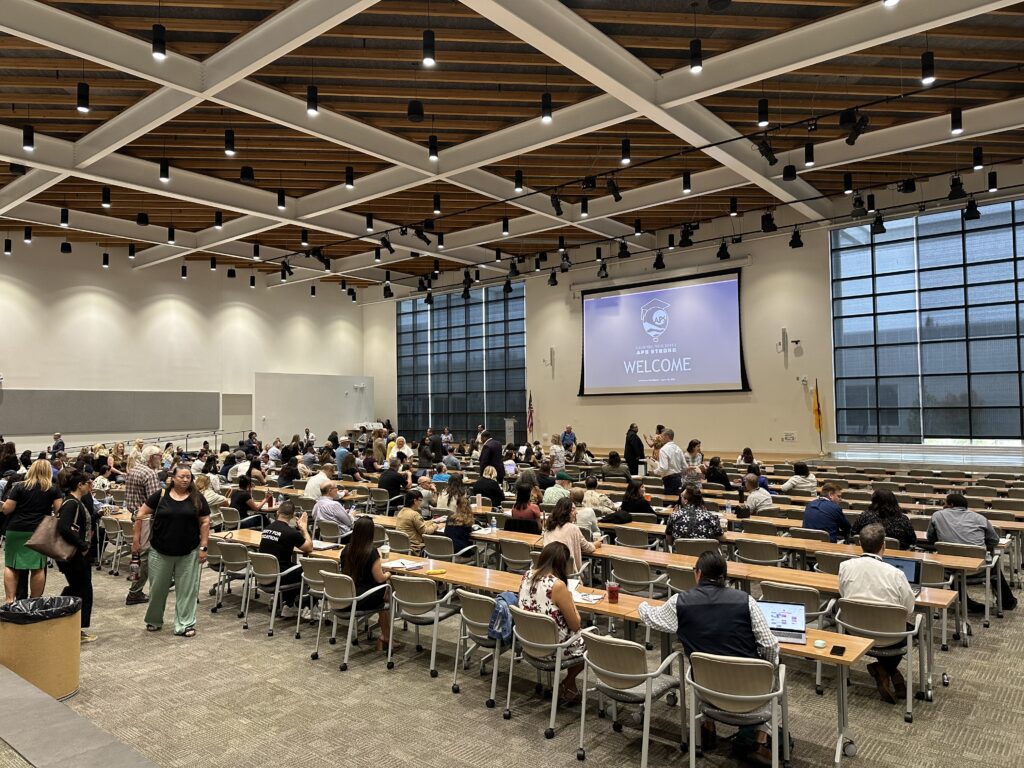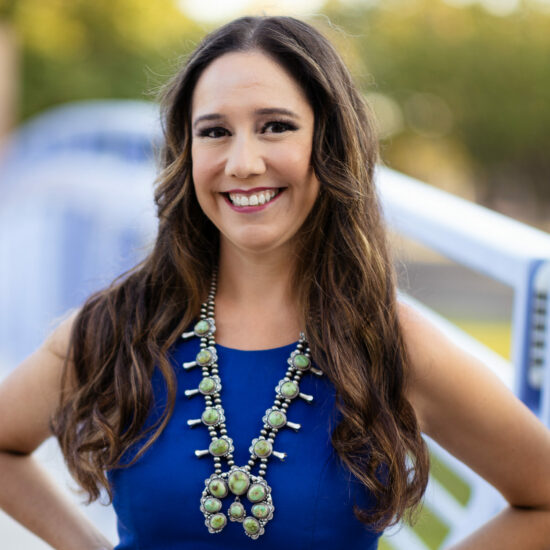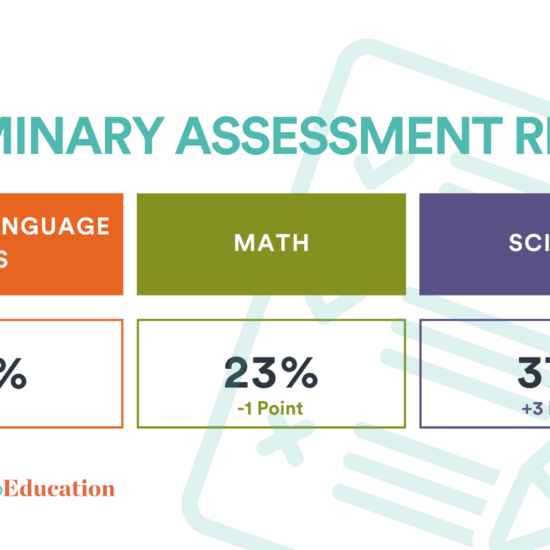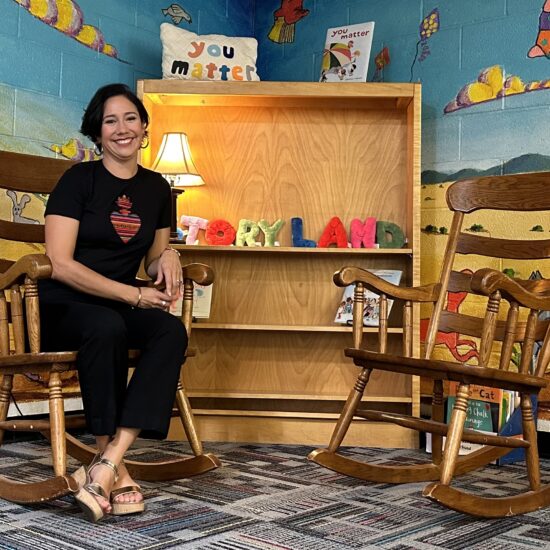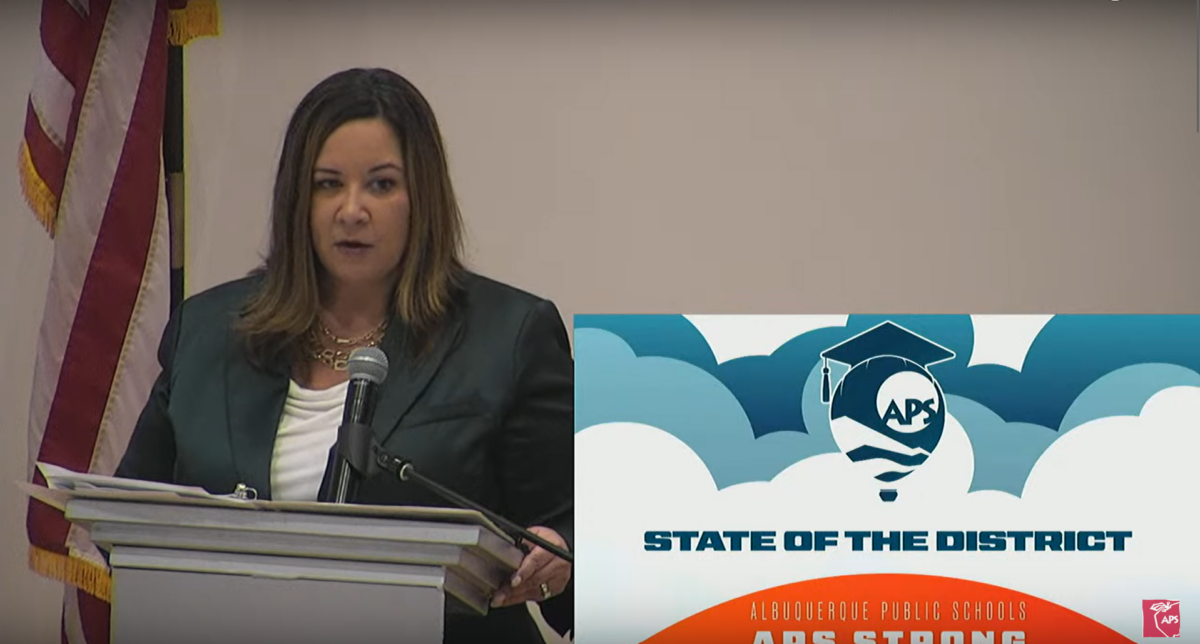
A year after the release of their strategic plan, the Albuquerque Public School District held its inaugural State of the District, where leaders acknowledged hard truths and outlined the bold path forward.
Albuquerque Mayor Tim Keller opened the event by reflecting on the integral role education plays in the Albuquerque community, emphasizing the city’s support for APS.
APS Board President Danielle Gonzales followed, outlining the district’s work to create an ambitious strategic plan, including five-year goals, which focus on improving outcomes for Native American, Black, and economically disadvantaged students, as well as English learners and students with disabilities.
The event was held on August 28 at the Berna Facio Professional Development Center. It was broadcast live on YouTube and local radio, and brought together APS students, educators, community leaders, and dignitaries. Former Secretary of Education, Arsenio Romero, and his executive team were present, along with tribal officials from several of APS’ surrounding pueblos, Albuquerque city councilors, New Mexico State Legislators and a student from each one of APS’s 13 comprehensive high schools.
A Bold Path Forward
Superintendent Dr. Gabriella Duran Blakey delivered a candid and determined assessment of APS’s current state and outlined her bold vision for the future. Addressing the district’s pressing challenges head-on, Blakey presented a clear-eyed view of the work that lies ahead.
Blakey began by acknowledging the district’s current struggles, sharing alarming statistics.
Only 38 percent of third graders are proficient in reading.
Only 26 percent of eighth graders are proficient in math.
Just 72 percent of seniors graduate on time.
For the historically underserved Yazzie-Martinez students, the situation is even more dire. Despite these challenges, Blakey was resolute in her commitment to change, emphasizing that “business as usual” is no longer an option.
Blakey echoed earlier statements from Gonzales about the hard work undergone by APS’ elected officials, hired administrators, school leaders, and the wider community. Working together, the APS community created goals and guardrails to guide their work that would improve student outcomes.
These goals are aimed at improving outcomes for Native American, Black, and economically disadvantaged students, as well as English learners and students with disabilities. The goals include:
- Early Literacy: Increasing the percentage of third-grade students identified in the Yazzie-Martinez decision plus African American students who demonstrate grade-level proficiency in English Language Arts (ELA) from 27.3 percent in May 2023 to 37.3 percent by May 2028.
- Math Proficiency: Raising the percentage of eighth-grade students identified in the Yazzie-Martinez decision plus African American students who demonstrate grade-level proficiency in mathematics from 11.1 percent in May 2023 to 21.1 percent by May 2028.
- Post-Secondary Readiness: Enhancing the percentage of high school graduates who earn credit in two or more Advanced Placement, International Baccalaureate, or Dual Credit courses, or who earn an industry certification or Bilingual Seal, from 39.6 percent in September 2023 to 49.6 percent by September 2028.
- Skills, Habits, and Mindsets for Life Success: Increasing the percentage of students who demonstrate key life skills such as perseverance, self-regulation, self-efficacy, and social awareness by 10 percentage points across various metrics by 2028.
“We have to reject the status quo and embrace a culture of accountability if we’re going to move the needle on student outcomes for our students in Albuquerque,” Blakey said.
Her speech made it clear that APS, under current leadership, will be focused on making transformative changes to improve academic performance across the board.
In her short tenure of just 59 days as superintendent, Blakey has already initiated several key actions aimed at aligning the district with its strategic goals. Among these actions are:
Administrative Reorganization: Aimed at better positioning the district’s central office to meet the outlined goals.
Strategic Plan Alignment: Fine-tuning the district’s existing strategic plan, “Emerging Stronger,” to ensure it is directly aligned with the goals.
Curriculum Consistency: Working with teachers to create units of study that standardize the content taught at each grade level across the district, and aligning the sequence and timing.
Teacher Training: Committing to training every elementary school teacher and principal in LETRS, a professional development program focused on structured literacy.
Community School Partnerships: Expanding partnerships to provide students with the necessary support services to succeed.
Fine Arts Expansion: Completing the district’s initiative to ensure every APS elementary school has art and music programs.
Attendance Initiatives: Expanding programs to combat chronic absenteeism, with nearly 31 percent of students chronically absent last school year.
Blakey also introduced a new system that grants greater autonomy to schools that are performing well, while directing more resources and support to those that are struggling. “Schools that need more help will get it, and they will get it faster,” she said, signaling a shift toward a more responsive and tailored approach to school management.
Throughout her speech, Blakey returned to the theme of accountability, a consistent theme in the “Emerging Stronger” framework. “I can’t guarantee that every one of these changes will have the impact that we expect, but what I can promise you is that we will monitor the results we’re getting, and we will change course if we find that the investments aren’t paying dividends,” Blakey said, her commitment to results-driven leadership.
Despite the challenges and barriers, Blakey said the district is having success.
She highlighted stories from across the district, celebrating significant academic gains that exemplify the positive impact of dedicated efforts by educators and administrators. These educators, she said, are making lifelong differences in student lives.
At East San Jose Elementary, Blakey pointed to the school’s impressive 19.1 percentage point increase in reading scores and a 19.7 percentage point rise in math scores as a testament to the hard work and strategic focus of its staff.
Similarly, MacArthur Elementary saw a remarkable 32 percentage point improvement in math scores, an achievement that Blakey attributed to the school’s commitment to targeted instructional practices and resource allocation.
Blakey recognized the leadership of Ed Ortiz, the principal at East San Jose, who has been instrumental in driving these gains. She praised Ortiz and his team for their relentless dedication to student success, noting how their efforts have transformed the academic landscape for their students.
She thanked Kelly Davis, the community school coordinator at Wilson Middle School, for her work with the community school councils and Whittier Elementary School to organize a walking school bus to ensure students’ safety on their way to school.
Recognizing strides made to prepare students for life after school, Blakey recognized Sean Coffey, a welder who has been teaching in the welding fabrication program at Valley High School for the past five years. She highlighted his efforts in preparing students for careers in the trades, noting that his students leave the program with OSHA certification, and many have already secured good-paying jobs after graduation.
Blakey acknowledged the APS community, thanking them for their continued support. She urged educators, parents, and community members to join in the effort to transform the district, emphasizing that improving student outcomes would require collaboration, dedication, and a willingness to embrace bold changes.
Blakey’s message was one of cautious optimism. While she acknowledged the long road ahead, she expressed confidence in the district’s ability to rise to the challenge.
Setting a tone for the future, Blakey said, “What is the state of the district? Last year, we were emerging stronger, and today, I can say: We are APS strong.”
